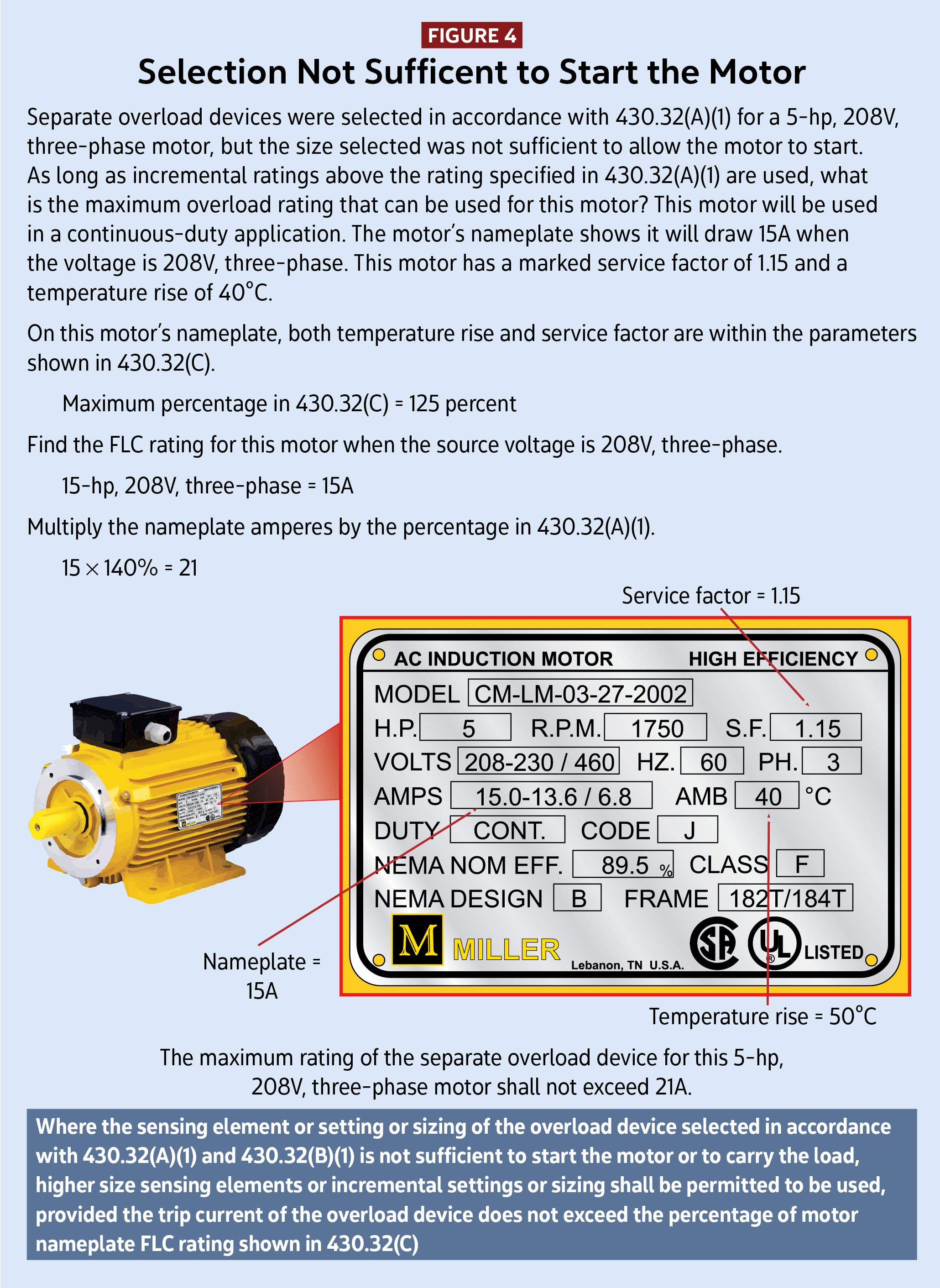Transformer Voltage, Motor Circuits, and Overcurrent Protection: Understanding NEC Article 430
Transformer Voltage, Motor Circuits, and Overcurrent Protection: Understanding NEC Article 430
Understanding Transformer Voltage and Overcurrent Protection in Motor Circuits
When designing electrical systems, ensuring proper overcurrent protection for motor circuits is crucial. According to the National Electrical Code (NEC), conductors must be protected against overcurrent based on their ampacities as specified in Section 310.15. However, certain exceptions exist under Section 240.4(A) through (G), which allow for flexibility in overcurrent protection.
One key rule, often referred to as the "round-up rule," is found in Section 240.4(B). This provision permits the use of the next higher standard overcurrent device rating, provided that three conditions are met:
- The protected conductors must not be part of a branch circuit supplying more than one receptacle for cord-and-plug-connected portable loads.
- The ampacity of the conductors does not match a standard fuse or circuit breaker rating without overload trip adjustments.
- The next higher standard rating must not exceed 800 amperes (A).
Role of Transformer Voltage in Motor Circuits
Transformer voltage plays a significant role in motor circuit protection. Section 240.4(G) outlines overcurrent protection for specific conductors, including those used in motor and motor-control circuits. Proper voltage regulation in transformers ensures motor circuits operate within safe limits, preventing electrical hazards.
Motor Overload Protection Requirements
Motor overload protection is covered in Part III of Article 430. According to Section 430.31, this part specifies overload devices designed to protect motors, motor control apparatus, and branch-circuit conductors from excessive heating caused by overloads or failure to start. These overload devices are typically installed in the motor controller.
A motor controller, as defined in Section 430.2, is any switch or device used to start and stop a motor by making or breaking the motor circuit current. In practical applications, these controllers are commonly known as “motor starters.”
Each motor in a continuous-duty application and rated above 1 horsepower (hp) must have overload protection per Section 430.32(A)(1) through (A)(4). The primary method involves using a separate overload device, commonly called a “heater” or “overload” in the field. The selection of these devices is based on the motor nameplate full-load current (FLC) rating and specific percentage factors.
Sizing Overload Protection Based on Transformer Voltage
When selecting overload protection, the following calculations are commonly used:
- Motors with a service factor of 1.15 or higher or a temperature rise of 40°C or less: Overload protection should be rated at 125% of the motor’s FLC.
- All other motors: Overload protection should be rated at 115% of the motor’s FLC.
Example 1: 10-HP, 208V, Three-Phase Motor
A 10-hp motor operating at 208V three-phase draws 26.6A (according to its nameplate). Since its service factor is 1.00 and its temperature rise is 50°C, the applicable factor is 115%:
Overload Protection = 26.6A × 115% = 30.59A
Example 2: 2-HP, 208V, Three-Phase Motor
A 2-hp motor at 208V three-phase draws 5.7A and has a service factor of 1.15. Since its service factor meets the 125% threshold:
Overload Protection = 5.7A × 125% = 7.13A
Higher Overload Protection Settings for Transformer Voltage Variations
Section 430.32(C) allows for higher percentage factors (140% or 130%) in cases where the standard overload setting is insufficient to start the motor.

Example 3: 5-HP, 208V, Three-Phase Motor
A 5-hp motor at 208V three-phase with an FLC of 15A has both a 1.15 service factor and a 40°C temperature rise. If the standard 125% setting does not allow the motor to start, Section 430.32(C) allows a higher factor of 140%:
Maximum Overload Protection = 15A × 140% = 21A
Conclusion
Understanding transformer voltage and its impact on motor circuits is vital for proper system design and compliance with NEC Article 430. By applying the correct overcurrent and overload protection principles, electrical engineers and technicians can enhance safety and efficiency in motor-driven applications. Ensuring the right transformer voltage regulation minimizes electrical hazards while optimizing motor performance.
For more insights on motor circuit requirements, stay tuned for the next part of our series on NEC regulations.